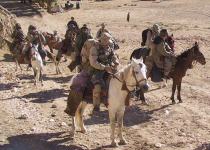You are using an out of date browser. It may not display this or other websites correctly.
You should upgrade or use an alternative browser.
You should upgrade or use an alternative browser.
Drones, the Air Littoral, and the Looming Irrelevance of the USAF
- Thread starter dimsum
- Start date
- Reaction score
- 7,688
- Points
- 1,160
Interesting application for an FPV - fixing.
Russian section takes cover in a house. FPV hovers in the yard behind a couple of trees. Russians fail to neutralize the FPV. House is cleared by a Ukrainian section with zero casualties. Russians frozen into inaction by the continuing threat of the FPV.
Russian section takes cover in a house. FPV hovers in the yard behind a couple of trees. Russians fail to neutralize the FPV. House is cleared by a Ukrainian section with zero casualties. Russians frozen into inaction by the continuing threat of the FPV.
- Reaction score
- 7,688
- Points
- 1,160
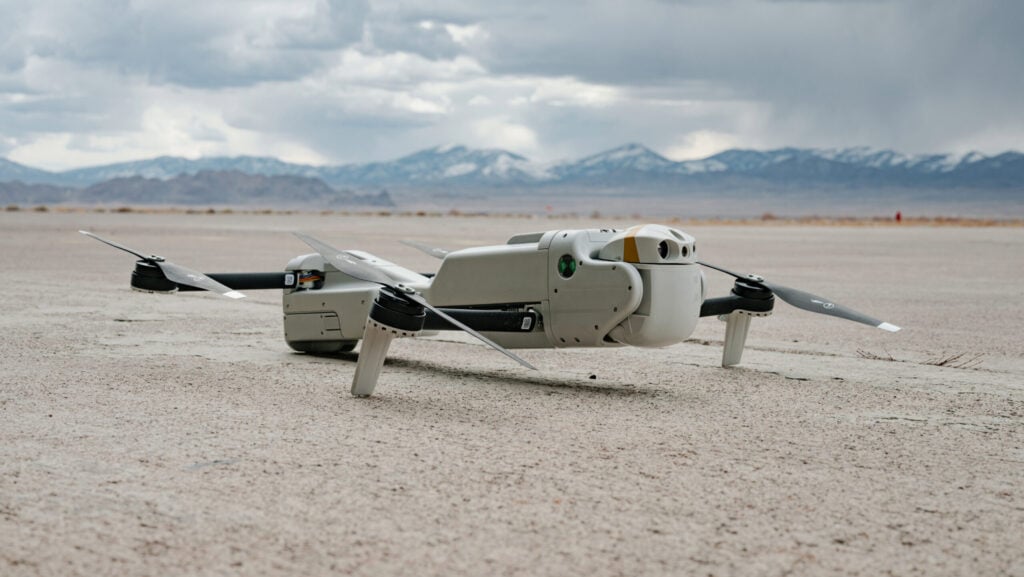
Teledyne FLIR's 'new' Rogue 1 loitering munition has been under SOCOM contract for two years - Breaking Defense
A SOCOM spokesperson told Breaking Defense, “Our next step is to purchase limited quantities of the Rogue 1 for further test and evaluation in support of a fielding decision and follow-on Low-Rate Initial Production in late calendar year 2025.”
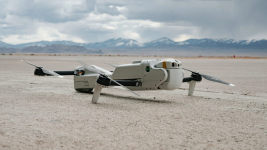
On April 11, the US Marine Corps awarded development contracts to Anduril Industries, Aerovironment and Teledyne FLIR Defense for a mix of VTOL and fixed wing LMS as part of the Organic Precision Fires—Light program. Selected solutions include the Rogue 1, Aerovironment’s Switchblade 300 Block 20, and an undisclosed VTOL solution from Anduril.
And related ....
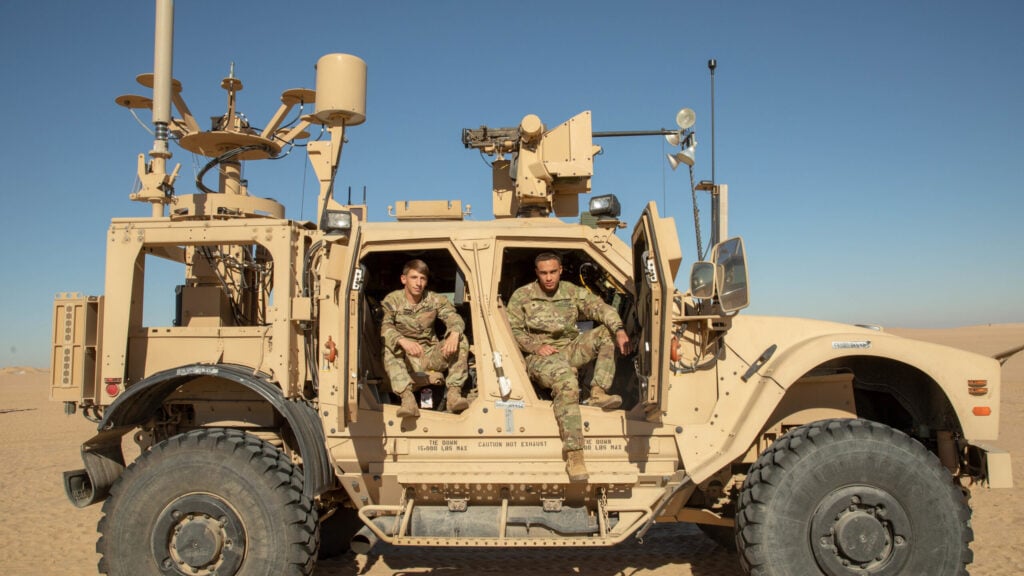
Army leader dismisses House proposal for drone branch creation - Breaking Defense
“Operating and defending against the drone threat is something that will be experienced by, you know, all formations at multiple echelons,” said Army Undersecretary Gabe Camarillo.
Drones, apparently, are everybodies' job.
- Reaction score
- 7,688
- Points
- 1,160
Pentagon looks beyond primes for cheaper drones
The Air Force and DIU say non-traditional contractors offer “the best chance” for inexpensive mass production.
BY AUDREY DECKER
STAFF WRITER
JUNE 3, 2024 03:59 PM ET
The Pentagon has picked four non-traditional defense contractors to develop drones that can be produced en masse and “on-call,” acknowledging that industry giants might not be up to providing the relatively inexpensive uncrewed systems that are looming larger in modern war.
The companies—Anduril Industries, Integrated Solutions for Systems, Leidos Dynetics, and Zone 5 Technologies—beat out more than 100 other applicants to develop an “enterprise test vehicle” that can be built quickly and cheaply, according to today’s announcement from the Defense Innovation Unit and the Air Force Armament Directorate.
“While the Armament Directorate remains committed to our highly-capable legacy products, we have become convinced that widening the aperture to include more non-traditional aerospace companies offers the best chance at accomplishing our cost-per-unit goals, project timeline, and production quantity goals,” Cassie Johnson, the armament directorate’s ETV program manager, said in the release.
The open-architecture drone is to fly at least 500 nautical miles, deliver a kinetic payload, and use commercially-available subsystems, according to a solicitation DIU released in September.
The Pentagon’s current way of building drones is slowed down by “exquisite components” and “labor-intensive manufacturing processes,” DIU said.
“Vendors are incorporating commercial off-the-shelf components wherever possible to mitigate supply chain bottlenecks and to keep costs low. Vendors will also leverage modern design for manufacturing approaches, ensuring air vehicles are not over-engineered for their intended mission, minimize use of expensive materials, and enable on-call high-rate production that is not possible with more exquisite counterparts,” today’s announcement said.
The companies will start test flights later this summer and fall, according to DIU. After flight demos, the program will pick at least one prototype “to continue development toward a production variant capable of rapidly scalable manufacture."
The drone could eventually be a candidate for the Pentagon’s Replicator program, which aims to produce thousands of low-cost drones. While details on Replicator have been scarce, Deputy Defense Secretary Kathleen Hicks said last month that the first Replicator drones have already been delivered to the Indo-Pacific region. DIU deferred questions on how the ETV program is linked to Replicator to OSD officials, who did not respond in time for publication.
In a statement, Jason Levin, senior vice president of Anduril’s air dominance & strike division said, “We look forward to working with our partners at DIU and the Air Force Armament Directorate to deliver a highly-producible, modular, affordable, and capable Enterprise Test Vehicle that will serve as the baseline architecture for large-scale production of next-generation airborne platforms.”
Leidos Dynetics said their ETV technology is the “perfect merger of our strike systems expertise, as exemplified by the modular, affordable and network-enabled GBU-69 Small Glide Munition, and our recent experience developing the air-launched, and air-recovered, X-61 Gremlins UAS,” Mark Miller, senior vice president for missile and aviation systems, said in a statement.
Integrated Solutions for Systems and Zone 5 Technologies did not respond in time for publication.
At least one of the defense primes has publicly acknowledged that it won’t compete to build low-cost, non-survivable drones. After Northrop Grumman, Boeing, and Lockheed Martin lost the Air Force’s contract to build robot wingman, Northrop CEO Kathy Warden said in an earnings call that the company is “not looking to compete in [the] more commoditized part of the market that’s very low cost and not-survivable systems. That's just not our business model, and we know that. So we'll remain disciplined in where we invest in the pieces of the market that we pursue, but we think that what we provide is still highly relevant.”

Pentagon looks beyond primes for cheaper drones
The Air Force and DIU say non-traditional contractors offer “the best chance” for inexpensive mass production.
- Reaction score
- 18,566
- Points
- 1,260
Part of the issue is security requirements for facilities and personnel quickly cause smaller companies to have expensive items.
Pentagon looks beyond primes for cheaper drones
The Air Force and DIU say non-traditional contractors offer “the best chance” for inexpensive mass production.www.defenseone.com
- Reaction score
- 7,688
- Points
- 1,160
Take a block of plastic into the field with you and build your own on demand.

 www.defenseone.com
www.defenseone.com
....
Rocket motors would seem to me to be a better fit for that type of vehicle given their relative simplicity. Electric, internal combustion and jet engines would all have to be built in factories and transported into the field to marry up with the 3D printed vehicles.

 defence-blog.com
defence-blog.com
....
Now you just need cheap sensors and CPUs and some energetics.

Air Force tests AI-designed, 3D-printed drones
Qatar-based Task Force 99 is also eyeing a new U.S. component.
Thus far, the team collaborated with 17 coalition partners, and a member of the Royal Canadian Air Force is fully embedded with the group, he said.
....
Rocket motors would seem to me to be a better fit for that type of vehicle given their relative simplicity. Electric, internal combustion and jet engines would all have to be built in factories and transported into the field to marry up with the 3D printed vehicles.

Anduril invests $75 million in Mississippi rocket motor facility
Anduril Industries has announced a major expansion of its solid rocket motor production facility in McHenry, Mississippi. The defense technology company is investing $75 million to significantly increase manufacturing capacity and create more than 60 new jobs by December 2024. The expansion aims...
....
Now you just need cheap sensors and CPUs and some energetics.
- Reaction score
- 18,566
- Points
- 1,260
You can print engines these days. Like a complete engine already assembled. It’s freaky to watch.Take a block of plastic into the field with you and build your own on demand.

Air Force tests AI-designed, 3D-printed drones
Qatar-based Task Force 99 is also eyeing a new U.S. component.www.defenseone.com
....
Rocket motors would seem to me to be a better fit for that type of vehicle given their relative simplicity. Electric, internal combustion and jet engines would all have to be built in factories and transported into the field to marry up with the 3D printed vehicles.

Anduril invests $75 million in Mississippi rocket motor facility
Anduril Industries has announced a major expansion of its solid rocket motor production facility in McHenry, Mississippi. The defense technology company is investing $75 million to significantly increase manufacturing capacity and create more than 60 new jobs by December 2024. The expansion aims...defence-blog.com
....
Now you just need cheap sensors and CPUs and some energetics.
- Reaction score
- 7,688
- Points
- 1,160
You can print engines these days. Like a complete engine already assembled. It’s freaky to watch.
Cool. You got a link?
GR66
Army.ca Veteran
- Reaction score
- 3,608
- Points
- 1,160
The advantage now enjoyed by small aerial drones on battlefields including in Ukraine is but “a moment in history,” French Army Chief of Staff Gen. Pierre Schill said at the Eurosatory defense show in Paris.
:quality(70)/cloudfront-us-east-1.images.arcpublishing.com/archetype/HSUNO5PG25FLHMJGEQOR4JPJKM.jpeg)
Small drones will soon lose combat advantage, French Army chief says
He cited the example of the Bayraktar drone, “the king of the war” at the start of the conflict in Ukraine, that is no longer being used.
- Reaction score
- 19,483
- Points
- 1,360
Probably some balance between today’s FPV minis and the big Class3/Group4-5 UAS…but the important takeaway is the agility of forces to adapt their respective TTPs to the dynamic nature of UAS/C-UAS capabilities.:quality(70)/cloudfront-us-east-1.images.arcpublishing.com/archetype/HSUNO5PG25FLHMJGEQOR4JPJKM.jpeg)
Small drones will soon lose combat advantage, French Army chief says
He cited the example of the Bayraktar drone, “the king of the war” at the start of the conflict in Ukraine, that is no longer being used.www.defensenews.com
- Reaction score
- 7,688
- Points
- 1,160
:quality(70)/cloudfront-us-east-1.images.arcpublishing.com/archetype/HSUNO5PG25FLHMJGEQOR4JPJKM.jpeg)
Small drones will soon lose combat advantage, French Army chief says
He cited the example of the Bayraktar drone, “the king of the war” at the start of the conflict in Ukraine, that is no longer being used.www.defensenews.com
In ten years time - what happens in the mean time? And what counter-measures will be developed to achieve the General's predicted state of affairs?
Not to worry though:
“Everything we had planned is perfectly in place, but it’s just a question of cost effectiveness on certain capabilities,”
GR66
Army.ca Veteran
- Reaction score
- 3,608
- Points
- 1,160
From the article:In ten years time - what happens in the mean time? And what counter-measures will be developed to achieve the General's predicted state of affairs?
Not to worry though:
Not sure what other weapons are being defeated at a 75% rate...artillery rounds? ATGM's? Rockets?While anti-drone systems are lagging and “leave the sky open to things that are cobbled together but which are extremely fragile,” countermeasures are being developed, Schill told reporters during a tour of the French Army stand at the show June 19. Already today, 75% of drones on the battlefield in Ukraine are lost to electronic warfare, the general said.
I'm certainly not suggesting that drones are not a major new threat (and opportunity) on the battlefield, but I'm not sure how much of the fixation on drones is because unlike most other weapons you get video evidence of all their successful attacks.
My gut tells me that it's actually the ISR capabilities of drones making the "transparent battlefield" that has/will have the greater overall impact on warfare by enabling effective massing of effects of all types on enemy force concentrations rather than swarms of small attack drones taking out individual targets.
- Reaction score
- 18,566
- Points
- 1,260
I personally believe that the French seem to have pulled a lot of their stats out of their asses in that article.From the article:
Not sure what other weapons are being defeated at a 75% rate...artillery rounds? ATGM's? Rockets?
I'm certainly not suggesting that drones are not a major new threat (and opportunity) on the battlefield, but I'm not sure how much of the fixation on drones is because unlike most other weapons you get video evidence of all their successful attacks.
My gut tells me that it's actually the ISR capabilities of drones making the "transparent battlefield" that has/will have the greater overall impact on warfare by enabling effective massing of effects of all types on enemy force concentrations rather than swarms of small attack drones taking out individual targets.
markppcli
Army.ca Veteran
- Reaction score
- 4,985
- Points
- 1,260
I’ll buy their numbers. Koffman has already made largely the same point about the realities for the much less visible, and more common, standard infantry Bn’s drone platoon having to use multiple drones to hit critical targets while a lot of our footage is from more specialized units who can pick and chose targets. II personally believe that the French seem to have pulled a lot of their stats out of their asses in that article.
- Reaction score
- 18,566
- Points
- 1,260
FPV's aren't making 80% of the battlefield kills, I'm sorry that is an absolute load of horseshit.I’ll buy their numbers. Koffman has already made largely the same point about the realities for the much less visible, and more common, standard infantry Bn’s drone platoon having to use multiple drones to hit critical targets while a lot of our footage is from more specialized units who can pick and chose targets. I
As for the loss rates - I am will to posit that EW and Pilot Error combine to create 75% of the losses
When the user/pilot looses control - they are going to blame EW most of the time, not admit they may have FU'd.
I'm not trying to malign EW - but I've seen some videos that some of the mentor teams have - and it's pretty clear the pilots make a lot of errors.
markppcli
Army.ca Veteran
- Reaction score
- 4,985
- Points
- 1,260
FPV's aren't making 80% of the battlefield kills, I'm sorry that is an absolute load of horseshit.
As for the loss rates - I am will to posit that EW and Pilot Error combine to create 75% of the losses
When the user/pilot looses control - they are going to blame EW most of the time, not admit they may have FU'd.
I'm not trying to malign EW - but I've seen some videos that some of the mentor teams have - and it's pretty clear the pilots make a lot of errors.
I didn’t see that part of the article, I was talking about the loss rate. I’ll reassess.
I agree about pilot error, that’s an understated problem with FPVs. It is not an easy to use system.
GR66
Army.ca Veteran
- Reaction score
- 3,608
- Points
- 1,160
How much of that pilot error is the drone losing LOS to the controller when it drops down low enough to engage the target? It really is amazing how many of the drone videos appear to be attacks on vehicles that are in wide open terrain. Many other videos seem to lose their feed just before striking their target, which I've heard reported as being the result of losing LOS due to intervening terrain as the drones near the ground rather than EW interference.FPV's aren't making 80% of the battlefield kills, I'm sorry that is an absolute load of horseshit.
As for the loss rates - I am will to posit that EW and Pilot Error combine to create 75% of the losses
When the user/pilot looses control - they are going to blame EW most of the time, not admit they may have FU'd.
I'm not trying to malign EW - but I've seen some videos that some of the mentor teams have - and it's pretty clear the pilots make a lot of errors.
Regardless of the specific causes of drone attack failure and the actual failure rate my general point is that I think that those that present drones as the ultimate game changing weapon that will totally dominate the battlefield are overstating their overall impact due to their very high visibility. There are definitely counters and they are sure to improve and other systems that have less visibility have much more impact that video clips would suggest.
Take a block of plastic into the field with you and build your own on demand.

Air Force tests AI-designed, 3D-printed drones
Qatar-based Task Force 99 is also eyeing a new U.S. component.www.defenseone.com
....
Rocket motors would seem to me to be a better fit for that type of vehicle given their relative simplicity. Electric, internal combustion and jet engines would all have to be built in factories and transported into the field to marry up with the 3D printed vehicles.

Anduril invests $75 million in Mississippi rocket motor facility
Anduril Industries has announced a major expansion of its solid rocket motor production facility in McHenry, Mississippi. The defense technology company is investing $75 million to significantly increase manufacturing capacity and create more than 60 new jobs by December 2024. The expansion aims...defence-blog.com
....
Now you just need cheap sensors and CPUs and some energetics.
It's not like we don't have CAF members who haven't done postgrads looking at cheaper drones:
We suck at employing these talents in the right away.
- Reaction score
- 7,688
- Points
- 1,160
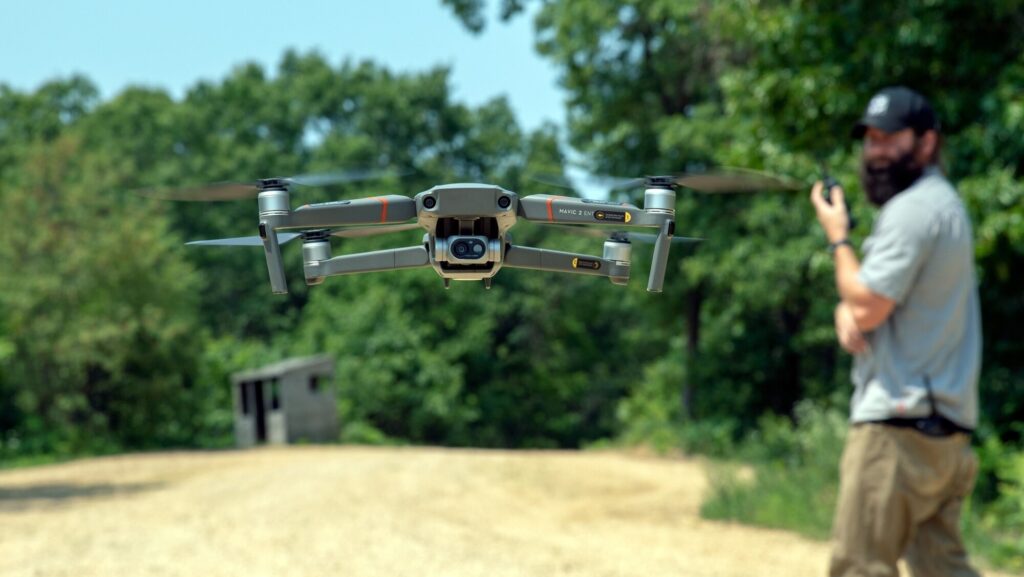
US needs to invest in cheaper long-range drones for Taiwan scenario, report says - Breaking Defense
“I don't know if it's going to be a fair fight,” said Stacie Pettyjohn, director of CNAS’s defense program and one of the authors of the report. “There are a lot of things that are stacked up against the United States when it's playing an away game."
In order to counter a Chinese invasion of Taiwan, the US military needs to buy a diverse fleet of uncrewed aircraft that spans the gamut from sophisticated long range stealth aircraft to cheap commercial drones, says a new report from the Center for a New American Security.
The challenge for a Taiwan scenario is that China has more drones than the United States, can manufacture military drones at lower costs, and can easily bolster its fleet with a large number of cheap small drones from its commercial industrial base, the report states. Further, the US forces would face a geographic predicament that China does not: how to successfully deploy and operate drones in Taiwan from bases hundreds of miles away, and from 6,000 miles away from the continental United States.
recommendations for both the US military and Taiwan.
For the US, those recommendations include prioritizing the development of “good enough” long-range drones that are cheaply priced to be acquired and replaced in mass quantities. That’s sharp reversal for the Defense Department, whose current suite of long- and medium-range drones are expensive, exquisite assets like the RQ-4 Global Hawk and MQ-9 Reaper — two in-demand platforms that could provide valuable tracking and strike capabilities against China but would likely be shot down over time.
“The United States’ current slate of drones does not suit a China fight,” the report states. “The DoD must develop and procure drones with the range to perform useful missions in this theater that can be purchased in sufficient quantities to make up for the many that will inevitably be lost in combat.”
investments in autonomous kamikaze drones that can attack Chinese ships
layered defensive systems that can counter Chinese drones.
create a rigorous program for training drone pilots and hammer out operational concepts and tactics for using drones in the Indo-Pacific.
Similar threads
- Replies
- 114
- Views
- 41K
- Replies
- 260
- Views
- 46K
- Replies
- 2
- Views
- 6K

